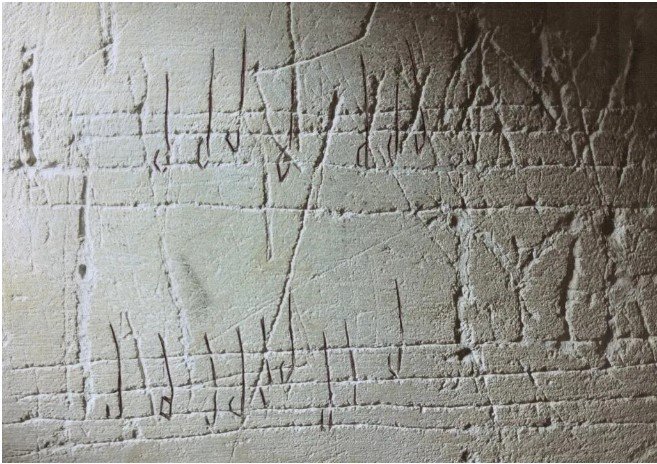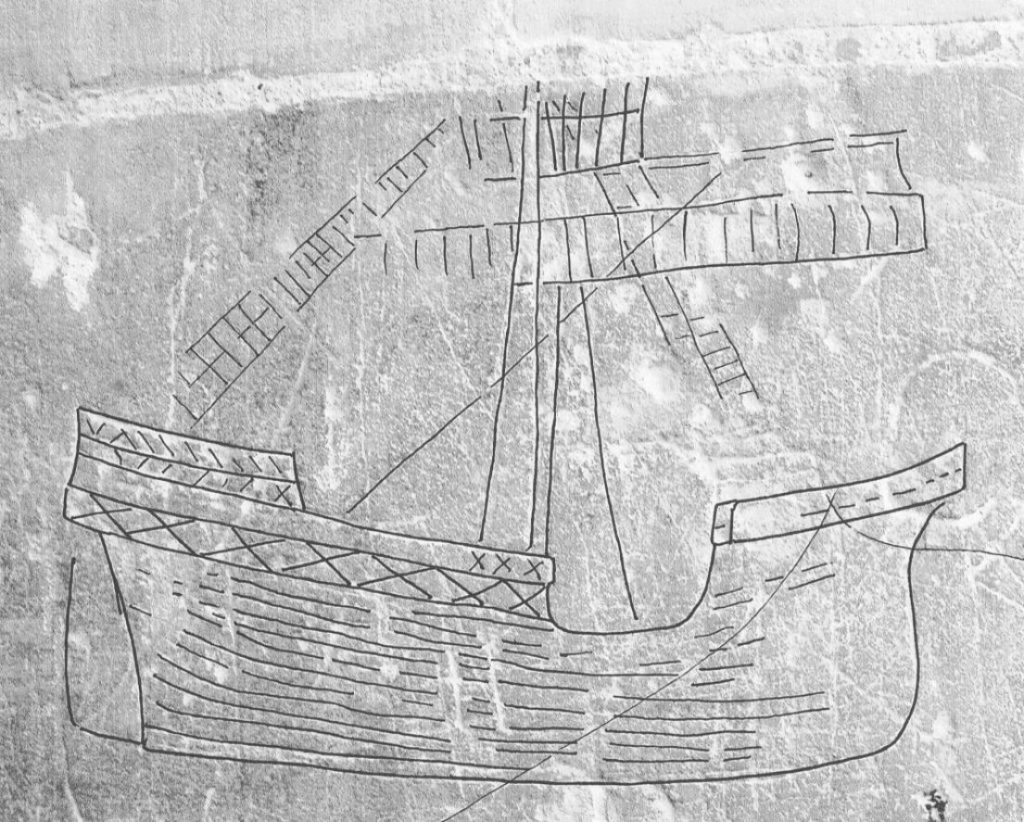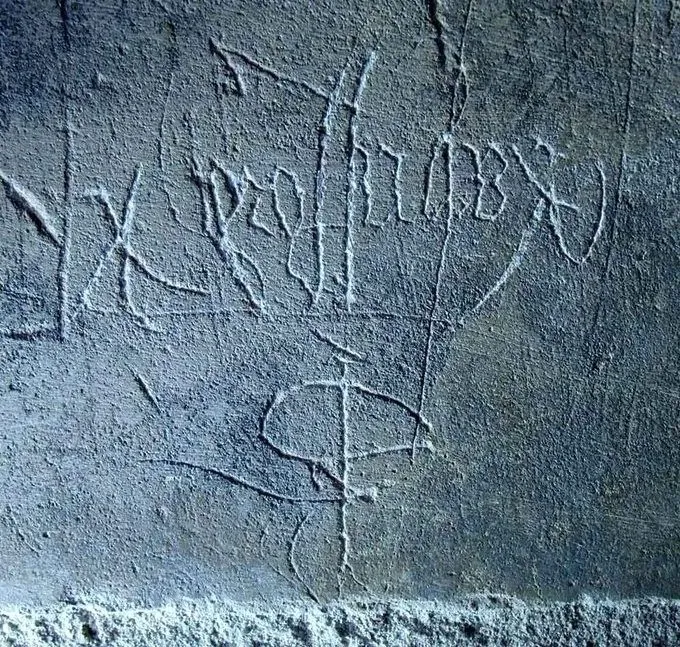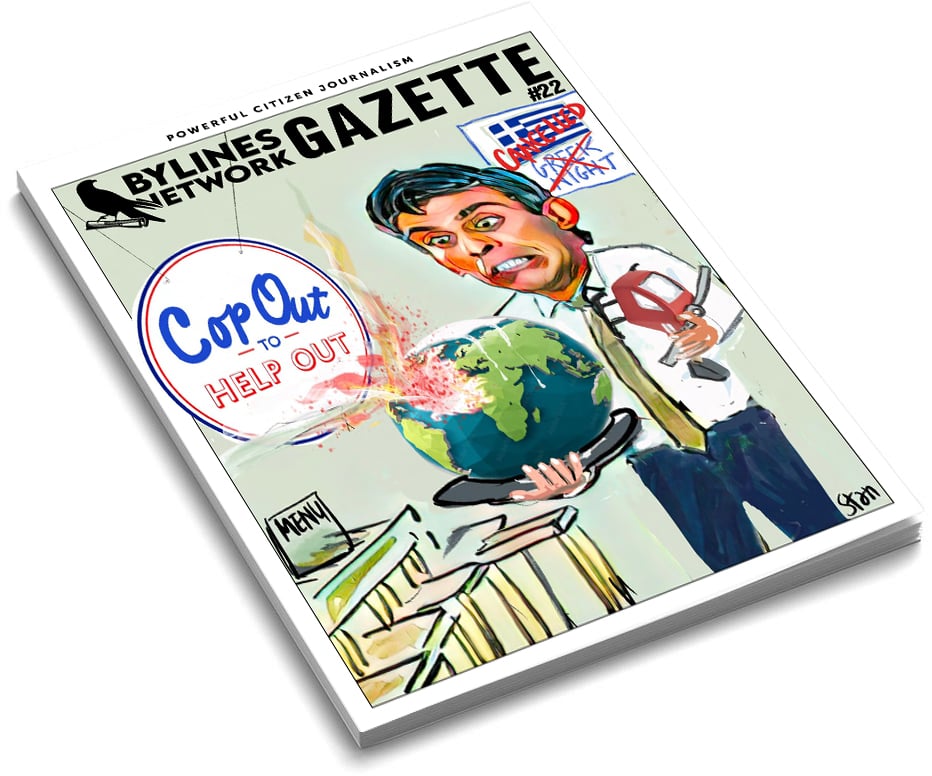East Anglia has a rich heritage with many historical sites that illustrate a colourful and varied past, of the people, where they came from, how they lived, dressed, hunted, farmed, fought, created. The earth beneath us continues to reveal artifacts that tell us their stories. I loved this piece about the graffiti on the stones of Norwich cathedral’s walls as it is reminiscent of the rock paintings around my childhood home in Zimbabwe. Throughout the ages, we humans have left behind messages that say, ‘we were here, this is who we were, how we lived, what we believed in and what we learned’.
The untold story of England is writ large on the walls of churches and cathedrals throughout the country. Remember to take a torch if you visit, and you’ll find rich rewards.
Some of the drawings are left by the unlettered and give the contemporary spectator a glimpse into their world. Until recently few had any idea that so much graffiti from the different centuries existed, let alone what those strange markings on the wall actually meant. More than 28,000 of these exist across 650 churches across Norfolk, of which so far only half have been surveyed.
Two members of the East Anglia Bylines team recently had a wonderful time touring Norwich cathedral to learn more. Light was shed – literally, as the best way to see these ancient and not so ancient scribbles is to shine light sideways onto them. We learned how to spot graffiti, and how to start de-mystifying it.
The tour was organised by Waveney Valley Community Archaeology group and led by Jess Macdonald and Matthew Champion. Their exhaustive survey of Norwich cathedral was the first of its kind in the country, and there may be more to find, as they have so far only been able to examine the ground floor of the cathedral.
Music and love, a ship and a curse
A very rare graffiti treasure in Norwich is a line of music that has been dated to before 1500, as the stave has only four lines.


Perhaps praying for safety, one artist engraved a handsome lugger. These are more often seen in coastal churches. It is not a pictorial representation, as there is no indication of the waterline. Careful lines show the planks that make up the ship’s hull.
In the 18th century, visitors on the ‘grand tour’ carved their names into the pyramids. In Norwich cathedral, we saw an 18th-century version of ‘Gavin & Stacey woz here’ left by a courting couple perhaps sheltering from the rain. Lovers today leave paired initials on a tree or sprayed onto a wall. The cathedral was one of the few places where a couple could meet without a chaperone. It was by then a busy public space, and offered plenty of scribbling opportunities in quiet corners.


Perhaps most surprisingly, we have the cathedral’s very own curse. To write someone’s name ‘wrong’ was to curse them: the name is written back-to-front and upside down, and supercharged by a sun and a moon. According to Jess the well-known local Keynsford family, mentioned in the Paston Letters, did indeed die out within a few generations. Mystifyingly, the elegantly written name is clearly the work of an educated scribe, and is in an area that would mainly have been accessible to priests and monks. A very angry cleric, maybe, or was someone paid to do it?
Powerful images
Dating the graffiti is relatively easy, as Jess explained, “the earlier you go back, the more images appear on the walls… only 5% of the medieval scribblings are text – the rest is images.”
One recurrent image, in many other churches as well as the cathedral, is the ‘daisywheel’ or ‘hexfoil’, also described as a ‘witch’s mark’. “People believed in the power of evil, and would do everything they could to ward off the ill forces that lurked outside the church door,” believes Champion. So these circular designs often appear near points of access, such as doors, windows and even chimneys, and in open spaces. They were designed to ‘trap’ evil spirits inside the circularity and complexity of the design.


Memorials great and small
One very frequent mark is reminiscent of a child’s simple drawing of a house: a square, with a triangular roof. Within the outline are usually initials and a date. The wealthy paid for brass plaques and alabaster memorials. Those who served them and tilled their land also wanted to remember their loved ones within the walls of the cathedral but could afford no such extravagance.
A particularly interesting version of this type of memorial is to be found near the high altar close to the memorial to Thomas of Erpingham (famed for the Battle of Agincourt). Here, the little house memorials are from the 1630s, when Norwich cathedral was Anglican, and no longer Roman Catholic. These memorials have etched into the ‘roof’ a fleur-de-lys design, often associated with the Blessed Virgin Mary. Were these memorials etched and thus coded in memory of a Catholic believer?
Medieval graffiti – the research continues
Knowledge of medieval graffiti and those writings from a later age is, in part, due to the enthusiasm and skill of an intrepid group of volunteers, professional historians and archaeologists. They took part in a Norfolk and Suffolk graffiti survey that started in 2010, was conducted mainly by carefully trained volunteers, and continues to this day. The Norfolk group includes historian and archaeologist Matthew Champion, author of Medieval Graffiti: The Lost Voices of England’s Churches, and volunteer Jess Macdonald, who’s been involved with mapping and discovering these scribbles from the start of the project in 2010.
Specialist tours are regularly organised by Norwich Cathedral and advertised on their events page. “This is a social history of England,” says Matt Champion – a fascinating visit celebrating the voices of the local people of Norfolk. Highly recommended!
More about East Anglia’s history from East Anglia Bylines
This post was originally published on this site be sure to check out more of their content.







